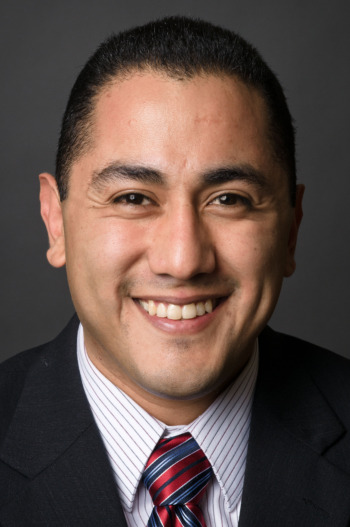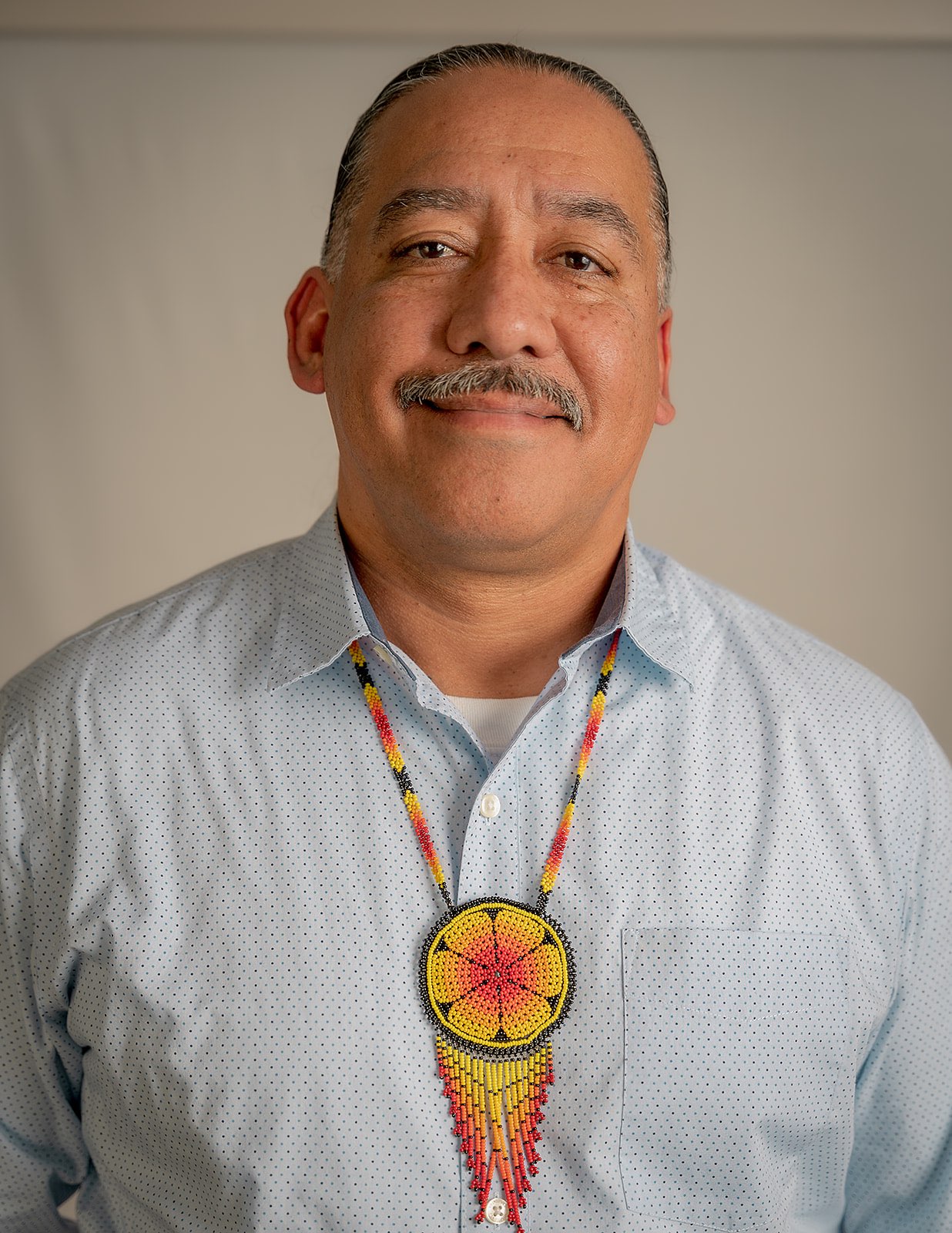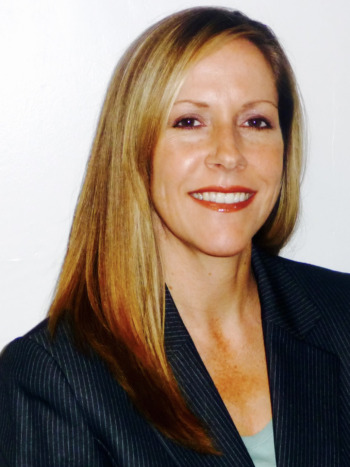In the months leading up to the June 30 shutdown of California’s more than 100-year-old lockups for juveniles, teenagers through 25-year-olds convicted of crimes such as robbery, rape and murder were transferred to county-run juvenile detention facilities nearer to their homes.
The closures of the state’s youth prison system had been in the works since Gov. Gavin Newsom in 2020 announced the shutdown, which would trim costs from juvenile justice budgets. He and state analysts said the move would give those youth and young adults more access to their families, whose moral and other support could improve a convicted young person’s chances of being redirected onto a better life path.
“The state opened up Pandora’s box and now we’re trying to manage this disaster.”
George Galvis, Communities United for Restorative Youth Justice
Many agree that Newsom’s intentions are good. But, they argue, the transfer of those youth from state to county custody has not been well-timed or well-planned.
“The state opened up Pandora’s box and now we’re trying to manage this disaster,” said George Galvis, executive director of Communities United for Restorative Youth Justice.
Galvis is among advocates for incarcerated youth and their families, probation officials and county administrators who say the closures, in some ways, caught them by surprise. County-run juvenile halls were designed as short-term holding facilities for youth as they awaited trial, they say. Juvenile halls were never equipped to confine youth sentenced for long periods of time for committing serious offenses. Juvenile halls lack the resources to provide rehabilitative programming — exercise, education, work training and other reentry programs — for youth who’d be incarcerated for years.
More than two dozen advocates, members of county juvenile justice commissions, probation chiefs and incarcerated youth interviewed for this article describe juvenile halls whose lack of preparation includes being understaffed. Already, critics say, youth are spending more time than they are supposed to in their cells, rather than being involved in outdoor or other activities. Access to mental health services and exercise, education and vocational opportunities is sparse, they say.

Courtesy of Frankie Guzman
Frankie Guzman, National Center for Youth Law
“What we’ve ultimately pivoted to,” said Frankie Guzman, senior director of youth justice at the National Center for Youth Law, “is worse than a medium-security prison. We now have maximum security youth detention facilities that are essentially mini county jails. We are hearing across the state that young people are languishing in juvenile halls without any kind of evidence-based, trauma-informed, culturally rooted treatment or services. And the settings are pretty draconian.”
Already, Los Angeles County juvenile halls have emerged as a worst-case scenario. In May, after 18-year-old detainee Bryan Diaz died of a drug overdose, they were shuttered for failing to address violations ranging from excessive use of force against youth to confining them to their cells for longer than the law allows to lack of rehabilitative programming to too few safety checks. Almost all violations stemmed from understaffing.
Katherine Lucero, a former juvenile court judge from San Jose, was appointed in 2022 to head the Office of Youth and Community Restoration, the new state agency that replaced the old Department of Juvenile Justice. Lucero agreed that justice-involved California youth still have not been in an ideal situation.
Her office found that only 12 of the state’s 58 counties had formalized a process for transferring youth convicted of serious or violent crimes from maximum security confinement to lower security ones such as residential behavioral treatment camps, group homes or released with electronic monitoring.
“I think people are doing the best they can with what they have, but there’s far more that needs to be done,” Lucero said.
Alameda County Juvenile Court Judge Scott Jackson said as things now stand, youths should not be returned to their home communities.
“I do not want any of our [kids convicted of violent crimes] leaving this facility and going directly back into the community,” Jackson said. “I don’t think that’s a healthy transition.”
Closures mark the end of an era
The 2023 closure of juvenile lockups ends the state’s youth correctional facilities’ sometimes troubled, 132-year history. They began as reform schools that disciplined and educated wayward juveniles. By 1941, they had evolved into prison-like juvenile settings in remote locations and, in 2015, were folded into the California Department of Corrections and Rehabilitation, the state agency that also oversees adult prisons.
In the 1960s and 1970s, the California Youth Authority, as the state’s juvenile correctional system was then known, was seen as the “pinnacle of success,” offering therapeutic interventions and community-based programs. Those programs disappeared in the 1980s, as political and public opinion shifted toward stiffer punishment as a deterrent to youth crime.
Justice reformers have pushed to have those more punitive facilities closed. At least since the 1990s, those facilities have undergone several investigations, starting with a 2003 investigation into violence and mistreatment that led to major reforms the following year.
“Today is the beginning of the end of juvenile imprisonment as we know it.”
Gov. Gavin Newsom in 2019
Those reforms coincided with a drop in California juvenile felony arrests, which plummeted from more than 90,000 a year in the mid-1990s to roughly 11,000 in 2020, mirroring the national trend. As a result, the state’s juvenile population peaked in the 1990s, when there were more than 10,000 juvenile inmates a year on average; in the years leading up to the shutdown of the state’s juvenile facilities, there were approximately 650 inmates.
Even as the state’s juvenile system started to improve, reformers nationally began advocating for youth offenders to be rehabilitated in the community. Several studies emerged linking youth incarceration with poorer physical and mental health outcomes later in life, including increased risk of substance use and imprisonment as an adult.
Even with the decline in juvenile arrests, youth of color continued to be disproportionately locked in those facilities. Black and Latino youth made up 87% of the state’s youth prison population and were locked up at 1.5 and 1.7 times the rate of white youth, respectively.
With a much lower population, the Department of Juvenile Justice shuttered many of its youth prisons and consolidated down two facilities: Chaderjian Youth Correctional Facility in Stockton and Ventura Youth Correctional Facility in Camarillo. Though the state’s troubles of the 1990 and early 2000s had been addressed, groups including the Center on Juvenile and Criminal Justice reported poor living conditions at those facilities and staff shortages that led to violence, drug overdoses and suicides.
Responding to earlier critiques, Gov. Newsom expressed his commitment to overhauling the system in January 2019 and to creating the new juvenile justice agency, placing it under California Health and Human Services’ purview.
“Today is the beginning of the end of juvenile imprisonment as we know it,” he said, according to a news release. “The system should be about helping kids imagine and pursue new lives… unpack trauma and adverse experiences … get an education and develop skills that will allow them to succeed in our economy.”
A year and a half later, amid the COVID-19 shutdown and an economic recession, Newsom decided to eliminate the state’s juvenile system. The rationale for that shift was based, in part, on a projected budget deficit and the fact that juvenile halls across the state were well under capacity.
In 2020, however, Chief Probation Officers of California penned a letter accusing the state of pushing the costs and liability for juveniles onto counties without granting counties the necessary authority and resources. The letter called the new protocols “unworkable.” Probation officials said they could not “assure delivery of improved outcomes for the young people we are being asked to serve.”
Still, the governor and state legislators proceeded. Passage of one juvenile justice realignment measure in 2020 and another in 2021 permanently closed the Department of Juvenile Justice and extended to 25 years old the age limit for those housed in county facilities. The change allowed counties to establish secure youth treatment facilities and allocated more than $200 million in grant funding annually to counties.
Those new laws also restricted the use of private prison companies and out-of-state placements for youth; and allowed the state’s Grove Youth Conservation Camp to remain open as a wildfire training camp for youth.
In Los Angeles, violations and an overdose death

Courtesy of Israel Villa
Israel Villa, California Alliance for Youth and Community Justice.
On May 23, the California Board of State and Community Corrections shut down two Los Angeles County juvenile halls. Barry J. Nidorf Juvenile Hall and Central Juvenile Hall were found to be “unsuitable for housing youth.” The closure came after those facilities, for months, had been under fire for a string of violations and the drug-overdose death of 18-year-old Diaz.
Drugs, said Steven Saavedra, 21, are a way to avoid being bored during incarceration.
“There’s nothing going on. You guys had no activity for us. Nothing,” Saavedra said, during the public comment period at the board meeting to decide the fate of those Los Angeles facilities. He’d been incarcerated at Barry J. Nidorf Juvenile Hall after being transferred from a detention facility run by the state’s Department of Juvenile Justice.
The staffing shortages in Los Angeles County had led to overly lengthy room confinement; incorrectly documented medications; not allowing youth to attend school; a lack of activities and exercise programs; use of force; and youth having to urinate in “receptacles in their rooms during the night shifts,” according to Board of State and Community Corrections documents.
“I experienced all the same crap when I was a kid in the early 90s,” said Israel Villa, deputy director at the California Alliance for Youth and Community Justice, whose decades of incarceration started when he was 12. “I used to piss on my door because they only had a certain amount of [bathrooms].”
The state investigators found that over a 10-day period in April 2023, 34 employees at the Los Angeles County youth detention facilities worked 24 hours straight to cover empty shifts.
Unit X, the name of the secure track unit where Bryan Diaz was housed, had fallen into chaos, said filmmaker Scott Budnick, a member of the Board of State and Community Corrections and founder of the Anti-Recidivism Coalition.
A regular visitor to Los Angeles’ juvenile halls, Budnick said he sent at least 10 emails to probation officials with this first sentence: “Do something now or someone’s going to die in Unit X.”
“There could be another Bryan Diaz any day now,” he said. “There’s nothing stopping it until we can get people to work and get the right people to work.”
What happened in Los Angeles was an anomaly, said Lucero, director of the newly established Office of Youth and Community Restoration.
She has visited all of California’s 36 county-run secure youth treatment facilities, she said.
“I’m not saying that all other 35 facilities are the gold standard because there’s a lot of room for improvement,” Lucero said, adding that she’s noticed a big shift among counties’ level of willingness to improve conditions and programming. She said it will take a few years for counties to start filling in the existing programmatic gaps.
New juvenile agency lacks enforcement and oversight
As part of the state’s juvenile realignment, the new Office of Youth and Community Restoration replaced the Department of Juvenile Justice. But the new office was not expressly empowered to oversee county probation departments; Lucero and her team cannot enter juvenile facilities without permission from county probation officials.
When realignment happens, whether for adult criminal or juvenile incarcerees, there is “a uniform reduction in state responsibility and oversight and in transparency,” said Erin Palacios, an attorney at the Youth Law Center in San Francisco.
The center successfully sued to force Fresno and Sacramento Counties to comply with state law requiring government bodies to publicly post meeting agendas and allow members of the public to attend. The suit was filed after several meetings on how to implement the new law were held without that public notification.
With the California Alliance for Youth and Community Justice, the Youth Law Center also sued the publicly funded, nonprofit County Probation Consortium Partnering for Youth Realignment, which probation chiefs created to help steer juvenile realignment efforts.
The lawsuit alleges that the “consortium was created to withhold public data and avoid state oversight and public scrutiny.” The lawsuit seeks a court order for the consortium to comply with California’s public meetings and records laws.
In October 2022, the Office of Youth and Community Restoration partnered with the consortium to collect data and provide the chiefs with public funds. The consortium, according to court records, denied the allegations and said it was not a public agency. It asked the court to dismiss the case and have the plaintiffs pay its legal fees.
Palacios said that’s a problem because now California’s 58 counties are potentially doing 58 different things, with “nobody really in charge of watching these facilities right now” because there is “no more state anything.”
Counties fall short on programming

Courtesy of Gonzalo Olvera
Vanessa Fuchs, Sonoma County Probation Department
In Alameda County, some members of the juvenile justice commission, including Juvenile Court Judge Scott Jackson, want more programming for the 23 youth who have been convicted of serious or violent offenses and increased access to Camp Sweeney, a minimum-security facility with substantial outdoor spaces and educational, vocational and art programs.
Jackson said he prefers having options, including sending youth to the camp and having music and art studios in the secure youth treatment facility.
“We’ve got empty units,” he said during a Juvenile Justice and Delinquency Prevention Commission meeting. “We can do things that help our kids prosper.”
Alameda’s probation department started allowing serious juvenile offenders into camp in November 2022, and as of August the camp held six youth.
Santa Clara County, the state’s sixth largest county, holds 38 youth convicted of serious or violent crimes and, according to some observers, has made the most progress amid the closing of state juvenile facilities. It has, officials say, educational and vocational programming; enrichment activities; peer mentoring; and a renovation of Santa Clara’s secure youth treatment facility for boys that “softens” its features by covering the metal counters, installing furniture and adding a kitchen in the common area.
Isaac Ortiz, who was released earlier this year from a now closed state detention facility, said he didn’t spend time in Santa Clara County’s secure youth treatment facility but continues to talk to the youth inside. It still lacks adequate programming, despite what officials say, he said.
“They have nothing to do,” Ortiz said. “They’re just using the phone and like watching TV. They don’t have any jobs for them to do — nothing.”
Mariel Caballero, Santa Clara’s deputy director of probation administration, in an email, responded: “Due to the influx of youth from the closure of the [state] Division of Juvenile Justice, some youth may be pending programming based on these factors.”
Some juvenile halls already are at capacity; some lack staff

Courtesy of Beverly Brook
Chaplain Beverly Brook
Officials in Sonoma County agreed to accept youth from 10 neighboring counties. But staffing shortages have prompted Sonoma, which can hold up to 140 youth, to halt intakes from those counties.
“I get calls monthly from the other counties asking, ‘Are you ready?,’” said Vanessa Fuchs, chief probation officer of the Sonoma County Probation Department.
Fuchs said she won’t be ready to accept more than the 60 youth that the county currently has in custody or or open Sonoma’s camp, which has remained closed since COVID-19, until she can fill 12 staff vacancies.
“We simply do not have more room right now and our staff are already working mandatory overtime so we can meet the needs of our current population,” Fuchs said.
Santa Cruz County had sent some of its youth to Sonoma County, despite protests by some members of its Juvenile Justice and Delinquency Commission who’d visited the Sonoma facility last winter and found an absence of vocational programming and mental health services.
“Ultimately, we thought it would be inhumane to keep the youth in our tiny little facility for up to seven years without the ability to go outside,” Santa Cruz Chief Probation Officer Fernando Giraldo said.
Santa Cruz’s juvenile hall was built in the late 1960s and is a small and “antiquated” facility, with no outdoor space, said Giraldo. The county decided to send the youth instead to Sonoma because it has a newer modernized facility with a large campus for programming and exercise, he added.
“Ultimately, we thought it would be inhumane to keep the youth in our tiny little facility for up to seven years without the ability to go outside.”
Santa Cruz Chief Probation Officer Fernando Giraldo
On paper, Sonoma County looked like a good choice. Officials highlighted several career training programs — a culinary program, a barbering program and a gardening program with a greenhouse — that would be available to those in the secure youth treatment facility, he said. But, due to understaffing, only two vocational programs are offered: intro to welding and a youth trades academy. The facility also offers a small gardening program.
Santa Cruz, which sent six youths to Sonoma County, chose to apply for funding not to create facilities to house the youth locally, but to spend $46,000 on a passenger van to transport the family to visit the kids in Sonoma County. Santa Cruz also opted to spend $2,000 on tablets for video calls between families and their incarcerated youth.
In addition to the absence of programming at Sonoma’s facility, youth from Santa Cruz who were housed in Sonoma had yet to see a mental health worker during her visit there, said Beverly Brook, chaplain and community member of the Juvenile Justice Coordinating Council SB 823 Subcommittee in Santa Cruz County.
Fuchs, chief probation officer for Sonoma County, said the county has been trying to add programming and hire more mental health workers but still confronts what she says is a “staffing crisis.” Right now, two of its three authorized behavioral/mental health clinician jobs are open. One of the two positions has been vacant for three years, despite active recruitment.
Without the camp, Sonoma has yet to transition a single youth from the secure youth treatment facility to a less secure placement, Fuchs said. The county is identifying other options that meet the court’s public safety preferences, Fuchs added.
“I wanted DJJ to close, however, they had a commissary, they had vocational training, they had jobs,” Brook, the chaplain, said. “None of that’s available in Sonoma County. The lack of programming up there is terrible.”
***
Brian Rinker is a Pennsylvania-based journalist who covers public health, child welfare, digital health, startups and venture capital. He reported this story while participating in the USC Annenberg Center for Health Journalism’s 2023 California Health Equity Fellowship.
































